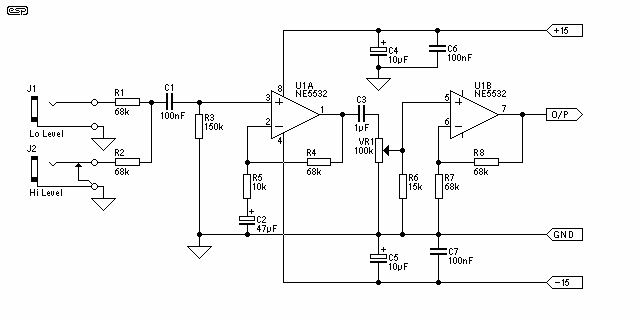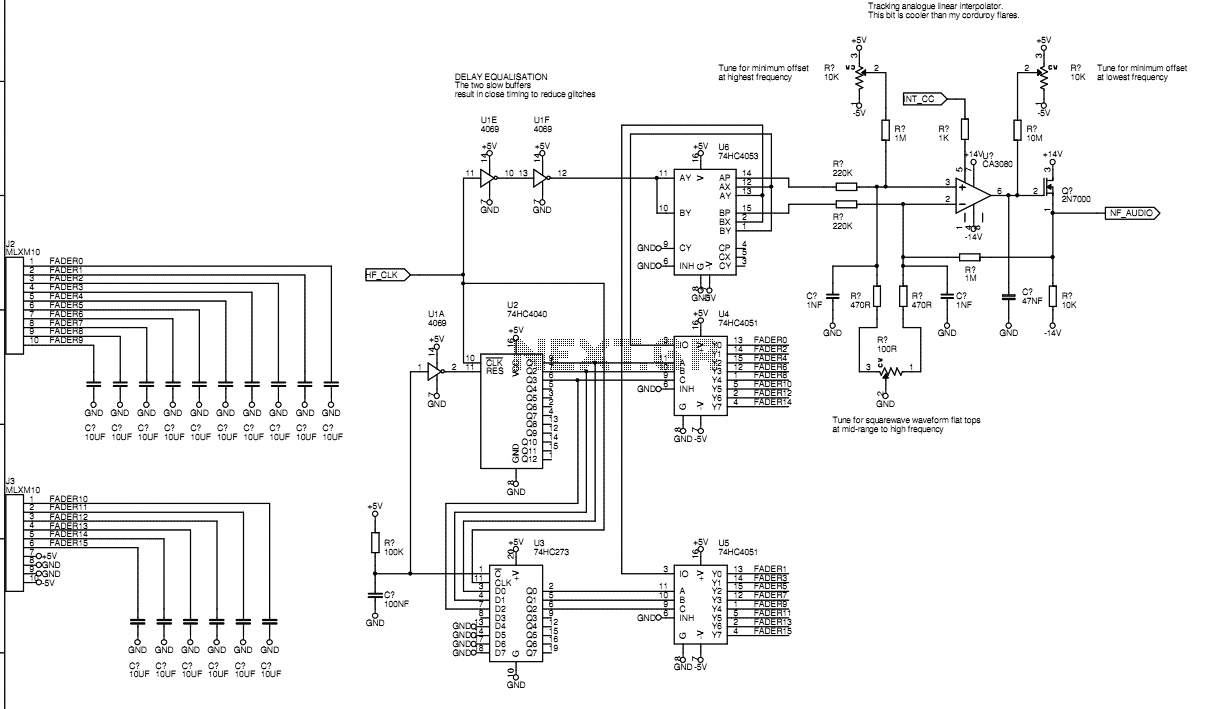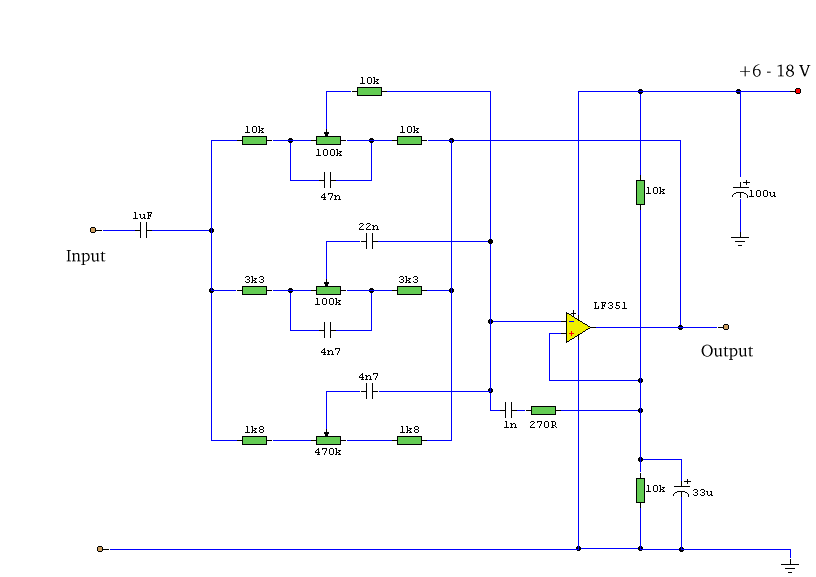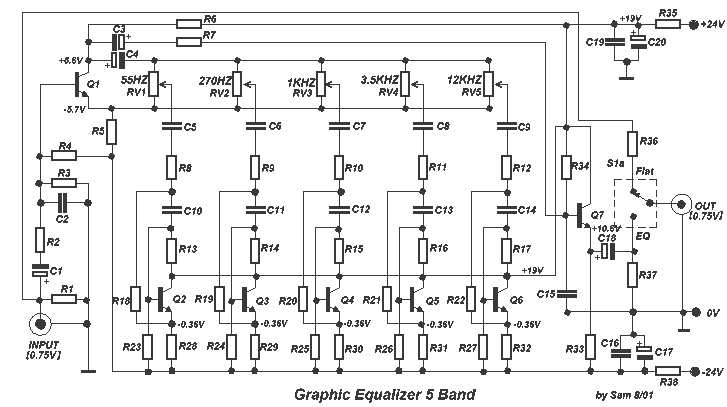
(Expandable) Graphic Equaliser

The equaliser under discussion is specifically engineered to function as a preamp for musical instruments, notably the guitar, bass, and keyboard. This design sets it apart from the majority of conventional graphic equalisers, which typically offer a range from fully off to fully on, rather than the standard +/-12dB commonly available. Consequently, there is no flat setting available, other than when all controls are turned off. This particular graphic equaliser is intended for sound creation, making it unsuitable for high fidelity audio applications.
It can be used as an auxiliary unit to existing instrument amp preamps and tone controls, among other things. The unit's adaptability is remarkable, capable of producing a hollow, "single frequency" type sound, extending to nearly any conceivable tonal variation. This is the initial project in a series that are based on the multiple-feedback bandpass filter, as outlined in Project 63. The design allows for the inclusion of as many or as few filter sections as desired by the user.
This equaliser is designed to offer musicians an extraordinary level of control over their sound, from the hollow tones reminiscent of single frequency sounds to a wide array of tonal variants. Its unique design, which deviates from the conventional +/-12dB range of most graphic equalisers, allows musicians to manipulate their sound output to a much greater degree. The equaliser's potential for integration with existing instrument amp preamps and tone controls further extends its versatility and adaptability. Moreover, the ability to modify the number of filter sections according to user preference contributes to the unit's customizability. Despite its unsuitability for hi-fi applications, this equaliser serves as an innovative tool for sound creation in musical instrument applications.This equaliser is designed as a preamp suitable for musical instruments - guitar, bass and keyboard in particular. Unlike most conventional graphic equalisers, each slider ranges from fully off to fully on, and not the more conventional +/-12dB or so that is normally available.
As a result, there is no flat setting (other than all off!). This graphic is designed to be used to create a sound, and is not suitable for hi-fi. It may be used as an add-on unit to existing instrument amp preamps, tone controls, etc. The flexibility is extraordinary, allowing a hollow "single frequency" type sound, right through to almost any tonal variant imaginable. This is the first of several projects based on the multiple-feedback bandpass filter described in Project 63, it can be made with as many (or as few) filter sections as you want.
🔗 External reference
It can be used as an auxiliary unit to existing instrument amp preamps and tone controls, among other things. The unit's adaptability is remarkable, capable of producing a hollow, "single frequency" type sound, extending to nearly any conceivable tonal variation. This is the initial project in a series that are based on the multiple-feedback bandpass filter, as outlined in Project 63. The design allows for the inclusion of as many or as few filter sections as desired by the user.
This equaliser is designed to offer musicians an extraordinary level of control over their sound, from the hollow tones reminiscent of single frequency sounds to a wide array of tonal variants. Its unique design, which deviates from the conventional +/-12dB range of most graphic equalisers, allows musicians to manipulate their sound output to a much greater degree. The equaliser's potential for integration with existing instrument amp preamps and tone controls further extends its versatility and adaptability. Moreover, the ability to modify the number of filter sections according to user preference contributes to the unit's customizability. Despite its unsuitability for hi-fi applications, this equaliser serves as an innovative tool for sound creation in musical instrument applications.This equaliser is designed as a preamp suitable for musical instruments - guitar, bass and keyboard in particular. Unlike most conventional graphic equalisers, each slider ranges from fully off to fully on, and not the more conventional +/-12dB or so that is normally available.
As a result, there is no flat setting (other than all off!). This graphic is designed to be used to create a sound, and is not suitable for hi-fi. It may be used as an add-on unit to existing instrument amp preamps, tone controls, etc. The flexibility is extraordinary, allowing a hollow "single frequency" type sound, right through to almost any tonal variant imaginable. This is the first of several projects based on the multiple-feedback bandpass filter described in Project 63, it can be made with as many (or as few) filter sections as you want.
🔗 External reference





